02/12/2022 (also known as 'the Event C-0°') 17:14
The buzzer goes off. The red light flashes, announcing I’m about to reach my destination. I must have dozed off again. Rupert stares at me questioningly from the fishbowl, as I rub my face and aching eyes.
‘Croak,’ he says.
We arrive in Scarlet Brook, a lifeless industrial town in northern England. I park my time machine in the seventh dimension, as the sixth is fully booked. I’m glad I’ve found a parking spot at all. We need to continue down on foot. I pick up Rupert and press on through an empty street flanked on both sides by rows of grey and brown houses lit by old-fashioned neon lights and lightboxes. It’s freezing cold. Dirty snow extends into infinity as does the colourless sky. The pervasive atmosphere of tiredness gets to me as I pass the town’s main square. A chilly wind blows right in my face, scattering tiny snowflakes in all directions. A short, overweight man in a dirty sweatshirt chases after a dog, brandishing a beer bottle over his head. Both disappear quickly into the perpendicular alley.
We carry on until we reach the ground zero — Scarlet Brook Centre of Arts and Crafts, extending about a hundred yards in each direction. The massive structure is made entirely of black concrete and glass. The building’s large dome seems fastened to the unembellished facade by an invisible hand of a drunken giant conducting architectural experiments for his own amusement. A yellow light passes through the large windows right onto the snow, producing a fascinating interplay of oranges and ochres. I stop at the entrance and flatten the uneven snow with my right foot, gazing through the sheets of glass into the unfolding drama I’m all too familiar with. Slowly, I become aware of the stinging sensation in my ears due to the intensity of the cold.
‘Alright, this is it.’ I fling the revolving door and enter.
● ● ●
The Scarlet Brook Biennale — one of the UK’s most prominent art fairs — proceeds within an extensive space divided by a labyrinth of plaster walls overlaid with colourful canvases fighting for viewers’ attention. Big sculptures and installations have been moved into the few larger openings. The arrangement of the exhibition items is impressively intricate.
Spectators trickle in at a leisurely pace. The rumbling chatter ebbs and flows as the guests socialise, sipping on dry Martinis picked up from the more-or-less centrally placed drinks table. Martini is an essential requirement to appreciating art, I’ve been told. I promptly grab one — it sure helps.
Spectators trickle in at a leisurely pace. The rumbling chatter ebbs and flows as the guests socialise, sipping on dry Martinis picked up from the more-or-less centrally placed drinks table. Martini is an essential requirement to appreciating art, I’ve been told. I promptly grab one — it sure helps.
I keep wandering, relishing in the pungent bitterness. Everything seems just fine. Nothing out of the ordinary. The official reception takes place in about two hours. The opening speech will be carried out by Larry Patel, an art critic from London of some international standing, acting as the event’s chief curator and one of the integral constituents of the Great Convergence. Larry features prominently in Scott’s research, as well as mine. Scott’s insights on the complex interrelations concerning the Great Convergence primary movers are astute and insightful. I’m glad I edited them out.
● ● ●
There's Larry. Relaxedly bored, with an old bachelor’s belly fastened firmly to his front. A heavyset physique of just-above-average height, in his mid-forties, with a slightly noticeable slouch. Artistically unkempt medium-length raven-black hair adds a dash of verve to the perfectly round face. As most art critics of some international standing, Larry wears a grey tweed suit. A tie in the colour of dying tangerines is strapped around his neck. Larry treads lazily onwards, now and then stopping by a random art piece. His mind meanders unsystematically, as do his small and shifty eyes. He pouts his lips, tapping nervously at his thighs with stubby fingertips, a self-developed mannerism serving as a subtle display of his intellectual powers.
I come forwards, but in a moment of inattention I ram into Larry’s side, spilling the rest of my Martini bitterness right on his grey tweed sleeve. Larry demonstrates his acute displeasure by thrashing about with both hands. His unusually high-pitched voice rings in my ears like a wailing siren. In a little while, however, he graciously consents to accept my apologies. He even presents me with a beautifully designed business card.
I pull a rubber ducky out of the lab coat I’m still wearing and hand it to Larry. He clasps onto it unquestioningly. Busy outlining several unrelated parts of his life to me, Larry doesn’t pay much attention to the ducky or Rupert. I tap my coat’s lapel three times and begin tracing the Hildburghausen-Ekkehardiner’s Anti-Termions anchoring Larry in universe 74-W. He yammers away, sounding like a digital music player — the end of each sentence blends with the beginning of the next one. Sparingly though, he pauses now and then, clearly expecting me to nod and say: Oh … I do. No sweat.
An idealist of rarely compromising posture, Larry publishes in the influential art magazines like Creator or D’Art. He runs through the lives and careers of accomplished artists, emerging artists and artist wannabes with the burliness of a steamroller. There are pros and cons to Larry’s inexorable crusade for the betterment of the world of art. While he succeeds in weeding out much of the unnecessarily ghastly creation, much hastily denigrated beauty disappears from this world forever.
‘Casualties are inherent in every war,’ Larry says, tacitly ignoring the fact that that most artists are poised to hate his guts rather than love him for his bona fide incontestable wit.
Speaking of which, here is Larry’s favourite line, which he’d routinely reveal to whom it may concern: Hate isn’t much different from love. You don’t know why you hate something — or somebody for that matter — you just do.
Speaking of which, here is Larry’s favourite line, which he’d routinely reveal to whom it may concern: Hate isn’t much different from love. You don’t know why you hate something — or somebody for that matter — you just do.
I check the reading on my mobile. Still nothing irregular. I’m not going to learn anything new or useful, that I don’t know already. Need to look elsewhere for clues. I tap my lapel twice and ask for the ducky back, which — consciously or not — Larry has already stuffed into his suit pocket.
‘Enjoy the show.’ Larry waves at me.
‘I intend to.’ I head back to the Martini table, steadily increasing pace.
● ● ●
Several overanalysed presumptions and Martinis later, I turn the remaining shreds of my attention to Geoffrey Moth, an inordinately ambitious artist dreaming dreams of greatness, despite his numerous failures to achieve one so far. There he is, lurking behind a larger-than-life sculpture of a shoe, made entirely of scrap metal and covered with pink nail polish. Geoffrey clenches and relaxes his fists. He fixes his narrowed eyes on Larry who keeps rambling on lightheartedly.
‘I’ll show you, cunt. Stupid cunt. I’ll show you all.’ Geoffrey’s tiny frame with spindly spider-like limbs sways rhythmically, as if unsure how to proceed.
Geoffrey’s only twenty-three but looks much older. Lank, dark and greasy hair coiled in a bun, pronounced cheekbones and an aquiline nose complete the picture representative of an emotionally unstable individual in desperate need of human sympathy.
Following the short art residency in Scarlet Brook, Geoffrey prepared his life’s best work — the twenty-foot-tall sculpture wrapped in white sheets, situated right at the centre of the exhibition space. Unbeknownst to him — or pretty much to anyone else — his sculpture is a faultless interdimensional portal. The greatest one ever made.
‘Never mind. You’ll be sorry. You’ll all be sorry. I’m the glorious lizard. Pathetic fucks. Sod it. Glory to the lizard. And you’ll be sorry,’ Geoffrey mutters to himself in a low and screechy tone. He stuffs three fingers between his thin lips and sucks at his dirty fingernails.
I reach for another Martini only to be interrupted by Rupert croaking, reminding me why we are here. I put the glass down and take a long look up at Geoffrey’s piece, towering menacingly over the lesser articles of creation. The sculpture will be unveiled to the public for the first time following the welcome speech by Larry. Soon after that, the explosives carefully hidden inside the portal will go off. The explosion will instantly kill all the participants of the Biennale, rip through the multidimensional spacetime and kick off the Great Convergence.
KEEP READING or buy now on AMAZON

